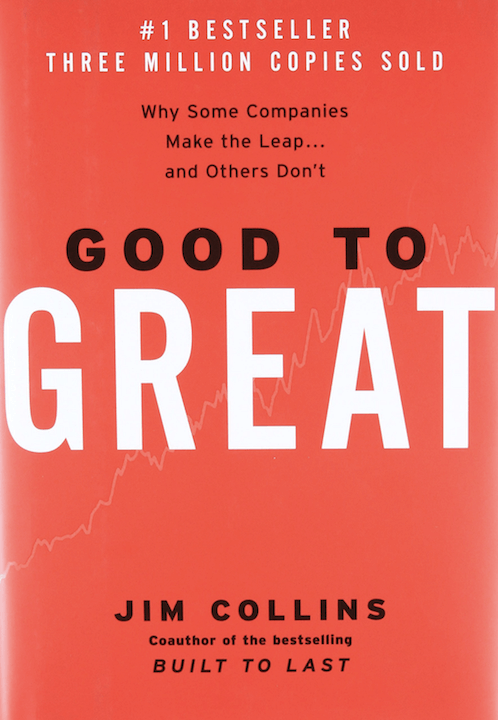There are certain tools and frameworks that every procurement professional should be aware of and using from day one of a new role or assignment. The following 3 frameworks should be used when you are trying to understand the overall category dynamics, how to approach a negotiation, how to segment your suppliers and how to manage your supplier relationships.
Kraljic’s matrix
The Kraljic’s matrix is used by procurement professionals all over the world as a supplier segmentation tool which is very useful when determining your supplier relationship management strategy. One should always put the Kraljic’s matrix next to the Supplier’s Preferencing Matrix (see below) because it is good to understand both how you as the customer sees them, as well as, how they view you. The Kraljic matrix has so many useful applications including but not limited to using it to decide how to approach a negotiation, where to allocate big and long-term projects, who to exit on the longer term, where to cut down on tail if your portfolio is too complex.
See below matrix:
Very simply put, the Kraljic Matrix is a matrix that has “Value” (Profit Impact) on one axis and “Risk” (Supply Risk) on the other axis. In the procurement world this then gets matrixed into 4 large buckets:
- High Risk and High Impact (a.k.a Strategic Critical): This is known as the “Strategic” bucket where focus should be on long-term thinking and development of suppliers. It is quite intuitive that if something has the potential to cause large impact to your business and there is high risk on supply, that you will approach that supplier relationship with a longer-term mindset, as you are essentially reliant on them. If there is a natural scarcity, i.e., you don’t have many options for alternative sources, then you could try increase security through longer term contracts or contracts with win-win for both you and the supplier to increase their mutual interest in supply continuity. If there is an option for alternative sourcing, it would be prudent to ensure that you approve and get in place back-up suppliers as it could then reduce the risk profile. Either way, for suppliers that land in the “strategic bucket”, ensure that you approach with a longer-term mindset, rather than trying to squeeze for short term savings.
- High Risk and Low Impact (a.k.a. Strategic Security): This is known as the “Bottleneck” bucket where focus should be on securing supply. Although the impact to business is low, suppliers of items that fall into this category still pose risk. The focus here should be to secure supply. As impact is low, they may not be number 1 priority in terms of finding alternative or backup sources, so other ways to ensure supply could be to ensure solid contracts, reducing risk through increasing stock holding in case of unstable supply and looking for potential substitutions for those products.
- Low Risk and High Impact (a.k.a Tactical Profit): This is known as the “Leverage Bucket” where focus should be on leveraging spend and driving savings. I like to think of this as the “fun category” for procurement because you have the opportunity to get some savings as you have the ability to negotiate in a low-risk environment.
- Low Risk and Low Impact (a.k.a Tactical Acquisition): This is known as the “non-critical category”. As it is lower impact, it is unlikely to be a major source of potential savings or optimization so the goal here should be to simplify and de-complexify the portfolio. For example, if you have 30 distributors in this category, check if you can decrease it to 15 distributors. What you don’t want to happen is the bulk of your procurement team’s time and resource being spent managing these “non-critical” items so the more you simplify and automate items that sit in this category the more your resource can be spent on work within the strategic buckets. You want to be giving less attention here and focusing your resources on where it counts most.
Suppliers Preferencing (or Perception) Matrix
As per above, you should always view the Kraljic Matrix next to the Supplier’s Preferencing matrix. After all, it is just as important to understand how the supplier views you. How they see you should influence how you approach the relationship management and upcoming negotiations. The principle is very much the same in that it is a matrix but here it has “relative size of business” on one axis and “attractiveness of account” on the other. You never want a supplier to be too reliant on you, but you want them to consider your business interesting enough to prioritize your supply and give you good value optimization opportunities (savings/incentives/first right of refusal on innovations).
If you are working with a behemoth where you only represent 0.1% of their turnover, and the rest of your portfolio represents no potential value to them (i.e. low attractiveness), your negotiations are going to be painful. Bottom line, always aim to get a little leverage and if you can’t, try find a supplier that your business is more meaningful to.
There are also 4 buckets in the Supplier’s Preferencing Matrix:
- Core – you have high relative value to their business and also are overall attractive as a business to them. As an example, if the supplier’s overall annual turnover is $ 100 million, and you spend $ 10 million with them per annum, then you represent 10% of their turnover. By most business standards, 10% of business turnover represents a relatively high value to their business. On top, the rest of your portfolio is attractive to them. As an example of attractiveness: you have 5 skin care lines and you produce your second highest selling skincare line at supplier A, but your other 4 skincare products are also very well suited to their expertise. This means, that the supplier can capture a lot bigger spend with you if you develop with them. Another way to look at attractiveness is how fast your sales are growing.
- Develop – here, you are highly attractive as an account however, you currently represent a small relative value to their business. This is still a good place to be as any smart supplier will try to develop you even if currently you have a low spend. When you manage a supplier that believes you to be a development partner, it is important to give them opportunities to tender for business.
- Exploit – here you have a high relative spend to the supplier but you are not exciting them on longer term development. The supplier will want to get as much margin from you as they can, so expect annual increases. Whilst they may still be interested in protecting the revenue, they’re not going to allocate their best resource to defending your business nor engage in negotiations in the way you might want them to. If you believe yourself to be with a supplier that views you as “exploit”, try figure out if there is any way to move them into “core”, never reveal your reliance on them and where possible find alternative suppliers to create leverage.
- Nuisance – here you are both currently low value to the supplier but also you offer no future development/growth value to them. This is not a great place to be as a buyer, as they essentially view you as a pain in the a*& and they won’t care if they lose you as a customer. If possible, approve another supplier. If not possible, try automating and simplifying the process to make it as painless for you and the supplier as possible. And most importantly, regardless of how aggressive your performance target is, don’t try negotiating a savings deal with a partner that sees you this way. Don’t poke the bear. Ask yourself if there is any way you can create leverage with the partner.
Porters’ 5 Forces
If there is ever a tool that you should use on day 1 of starting a new procurement role or assignment; it would be Porter’s 5 Forces. It helps to illustrate the overall strengths and weaknesses of an industry and the competitive forces at play. Understanding the overall industry and underlying competitive forces is why Porter’s 5 forces should really be a tool that underpins your overall portfolio strategy. It is also great in understanding your overall leverage in the category as a buyer. This is not only a great tool for procurement professionals but is used frequently as a management consulting tool.
The below image summarizes the main forces reviewed as part of a Porter’s 5 Forces assessment
Porters’ 5 Forces gives a sense of your overall buying power. It splits out into 5 forces that you should assess. Below is a short summary of the 5 forces:
- Competition – how many players are competing for significant market share? Look at how many, how diverse and how concentrated the number of competitors are. A good example of a highly competitive space is the Vaping space, with many players fighting to take lead position.
- Bargaining Power of Buyers – how easily can a buyer switch? If the cost to switch to a new supplier is high and if there are limited alternative suppliers then the bargaining power of buyers is low in the space because it would cost them a lot to move supply. A good example of this is pharmaceutical industry which requires lengthly regulatory processes to switch supply. If on other hand, it is cheap and easy to switch supply then the bargaining power of buyers is high.
- Bargaining Power of Suppliers – how many suppliers of the product/service are there and/or what is the uniqueness or differentiation of the offering? If there are many suppliers that can offer the exact same product or service, then there is no point of differentiation and many options for sourcing thus resulting in low bargaining power of suppliers. Vice-versa applies for high bargaining power.
- Threat of substitution –can customers use an alternative service or product with ease? An example of high threat of substitution is if a business is in the sale of paracetamol customers can easily substitute with ibuprofen or natural pain relief substitutes thus there is a high risk of substitution.
- Threat of new entrants: what are the “barriers to entry” for a new entrant to enter the industry? As an example, if a start-up wanted to launch a business of a pharmaceutical tablet for medical use, they would need to invest in studies which can cost in the millions, hence barrier to entry is high in pharmaceutical industry so threat of new entrants is lower.
If you are selling, you want to have a point of differentiation or exist in a market with higher barriers to entry, so you are not constantly catfighting over market share. If you are a buyer, you want to have high bargaining power as a buyer, with multiple options for substitution and low bargaining power of suppliers. However, regardless of the situation you land in as a buyer, your strategy needs to adjust to factor in the overall competitive forces you are playing in.
Reference:
- Webb J, What is the Kraljic Matrix, 2017, Forbes.com, available at
[https://www.forbes.com/sites/jwebb/2017/02/28/what-is-the-kraljic-matrix/?sh=49641079675f] - https://www.jmclconsulting.com/focus-on-costs-day-6-power-regimes-and-supplier-perception/
- Colwell C., Supplier Preferencing Matrix, 2012, Acuity Consultants, available at:
[https://acuityconsultants.com/wp/2012/02/how-to-select-suppliers-to-add-value-beware-the-suppliers-perspective/supplier_preferencing/] - Focus on Costs, 2020, JMCL Consulting, Available at:
[https://www.jmclconsulting.com/focus-on-costs-day-6-power-regimes-and-supplier-perception/] - Scott G, Porters 5 Forces, 2020, Investopedia, Available at: [https://www.investopedia.com/terms/p/porter.asp]
- Porter M, How Competitive Forces Shape Strategy, 1979, Harvard Business Review, available at [https://hbr.org/1979/03/how-competitive-forces-shape-strategy]


